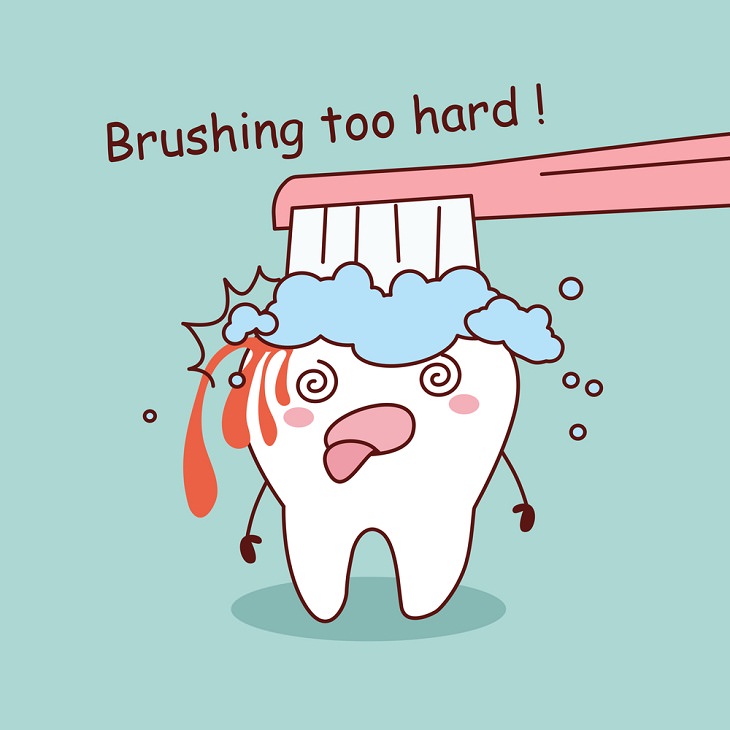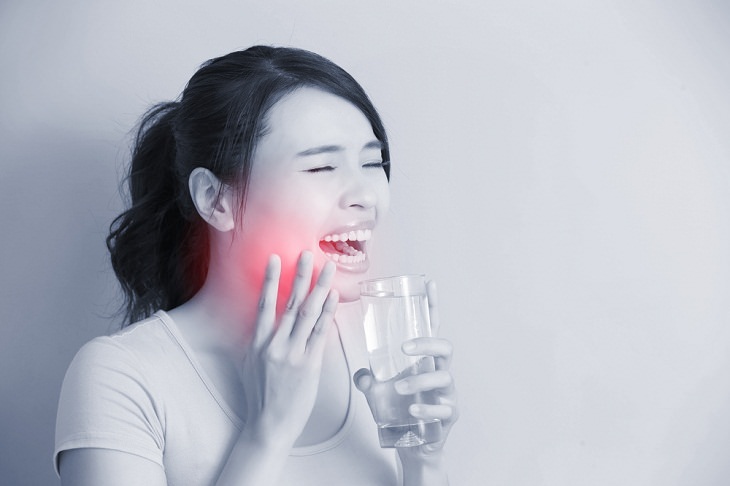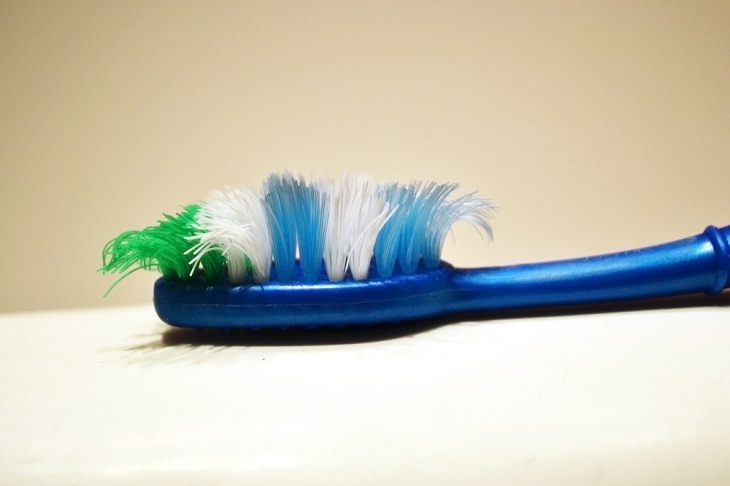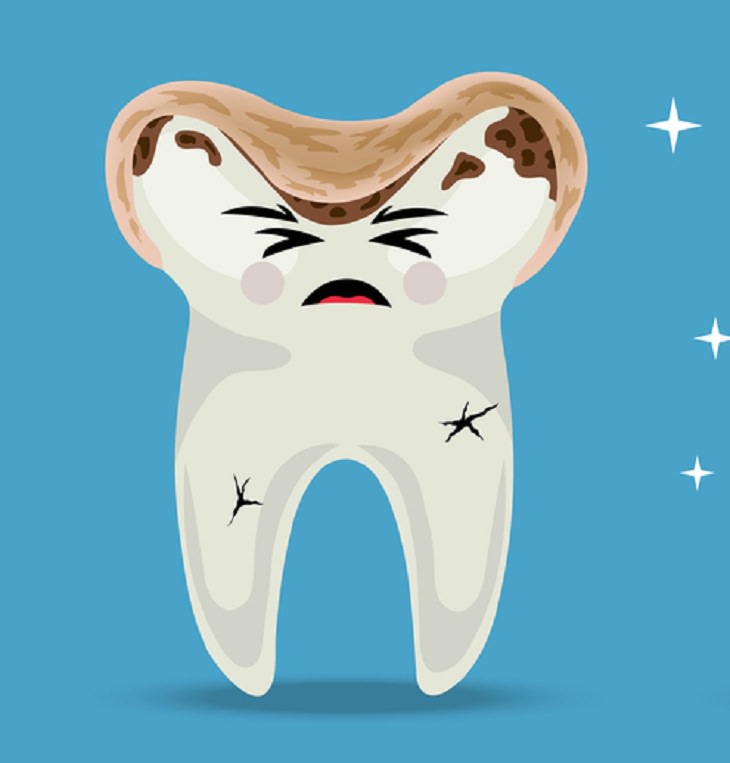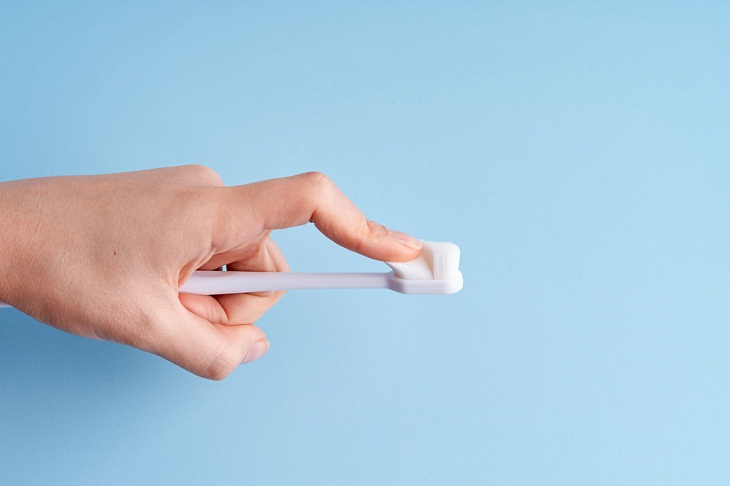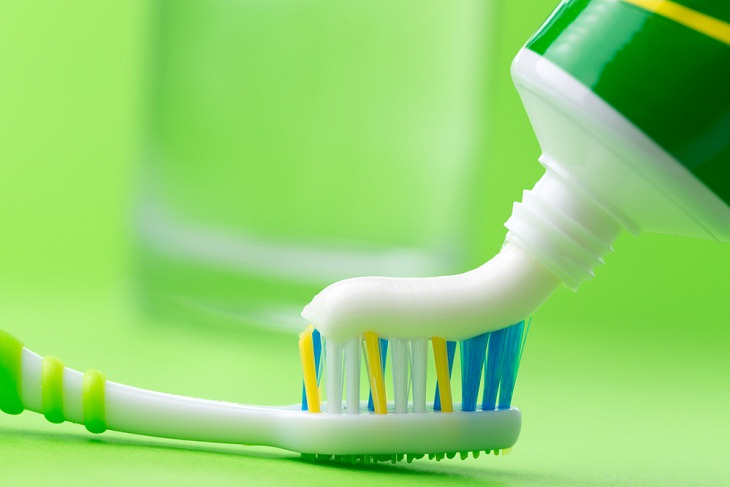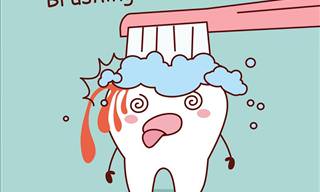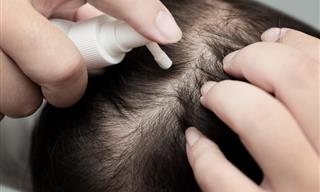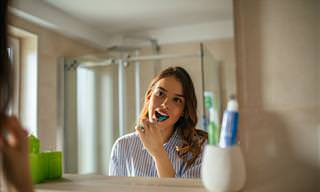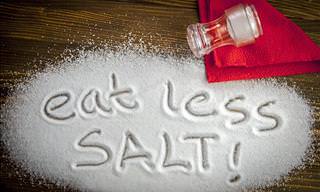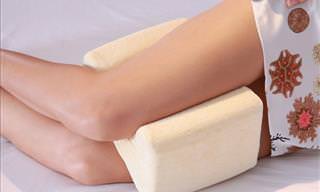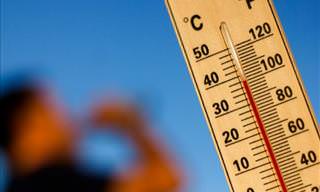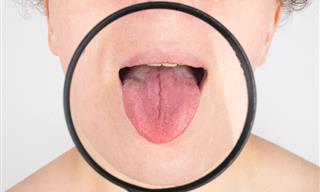Tooth sensitivity can be caused by tooth decay, worn tooth enamel, a cracked tooth, or even worn fillings according to the American Dental Association. However, the problem can also be caused by aggressive tooth brushing that can lead your roots to be exposed.
Brushing too hard can also wear out the enamel coating which will then be unable to protect the inner, more sensitive parts of your teeth causing painful sensations in the area. When this happens, eating or drinking hot and cold food or beverages can become extremely painful.
If your tooth sensitivity has been persisting, it’s time to set an appointment with an oral health professional.
2. Your gums are receding
Dentists say that overbrushing can also cause your gums to recede. This creates big gaps between the teeth and the gum line and it becomes easier for bacteria and plaque to collect in those spaces. Eventually, receding gums will expose the softer cementum (a connective tissue formed along a tooth's root), which can easily wear away and result in extreme sensitivity and potential tooth loss.
Related: Maintain Healthy Teeth and a Fresh Breath With These FOODS
3. Your toothbrush is worn out
The next time you are about to brush your teeth, take a close look at the bristles of your toothbrush. Are they looking frayed and splayed even though you just bought the brush a month back? Are the bristles feeling a little hard? If that’s the case then it's very likely you are brushing too forcefully. Your toothbrush can wear out quickly due to overzealous brushing and develop tiny serrated edges that damage the surface of the teeth.
Dental experts recommend changing your toothbrush every 3-4 weeks.
4. You have dental abrasion
Using a damaged toothbrush can also cause dental abrasion which refers to the loss of tooth structure by mechanical forces from a foreign object, according to the Herman Ostrow School of Dentistry of USC. Basically, when you forcefully and continuously use a damaged or worn-out toothbrush, it can wear away at the teeth enamel and also erode the softer dentin (the part that’s beneath that is beneath the enamel and cementum) and cementum structures. If you notice shiny and yellow or brown spots on the tooth, near the gum line, then that may be a sign of teeth abrasion. It might have happened because you’re pressing too hard or brushing too frequently. Consult a specialist at once if you show any signs of such abrasion.
Fortunately, there are some easy solutions to lessen the risk of developing these dental complications.
Simple Solutions to Deal With Overbrushing
1. Start using a toothbrush with soft bristles
Stiff or hard bristles may look like they will do a better cleaning job of your teeth, but they can lead to dental abrasion and gum recession as we have already stated above. So, choose a soft-bristled toothbrush as it will be much more efficient in removing plaque. Most importantly, it will be better for people with sensitive teeth and is unlikely to damage the enamel.
2. Use the proper brushing technique
While you may be conscious of keeping your teeth clean and getting rid of all harmful bacteria from your mouth, do know that it does not require aggressive brushing to remove germs. Following the proper technique of brushing should do the job just as well. The American Dental Association recommends placing your toothbrush at a 45-degree angle to the gums first. Then, gently move the brush back and forth in short strokes. Also, make sure that you pay attention to brushing the outer surfaces, the inner surfaces, and the chewing surfaces of the teeth properly. To clean the inside surfaces of the teeth, it would be better if you incline the brush vertically and then make several up-and-down strokes.
3. Wait at least an hour after your meal before you brush
Many people tend to brush immediately after having a meal, feeling that it's the best way to avoid any particles of food getting stuck in the teeth and to avoid any dangerous bacteria from accumulating there. However, oral health experts suggest waiting at least an hour after eating or drinking before brushing your teeth. Follow this strictly if you’ve consumed something acidic like say lemons or soda. If you want to make sure that your breath stays fresh after immediately a meal, then just pop a sugarless gum.
4. Use a low-abrasive toothpaste
What’s kind of toothpaste are you using? A high-abrasive toothpaste might be harmful to your teeth. The abrasiveness of your toothpaste can be measured by RDA (Relative Dentin Abrasion). Toothpaste makers have to regularly measure their product’s abrasiveness to receive FDA approval. Leading dentists say that an acceptable level of RDA in toothpaste must be around 200 and shouldn't be higher than 250. However, a toothpaste's RDA value isn't usually mentioned on the label. Generally, though, non-whitening tubes of toothpaste are considered less abrasive than the ones that are designed to whiten teeth or remove stains.
There is, however, an easy way to test a toothpaste's abrasiveness at home. Take a piece tin foil piece and use the tip of your finger to rub your toothpaste on it lightly. Now, rinse the toothpaste off under running water and see if there are any scratches on the foil's surface. A more abrasive toothpaste is likely to leave more scratches on the foil. This test has been approved by several reputed dentists.
Bottom Line:
Just remember that vigorous or overbrushing is not the answer to have spotless clean teeth and a healthy mouth. Follow the proper brushing technique and make sure you are gentle on your teeth while doing so. We also recommend visiting your dentist at least once every six months to maintain your oral health and to prevent the issues caused by rigid brushing.
Share this information with your loved ones...
 Go to BabaMail
Go to BabaMail


